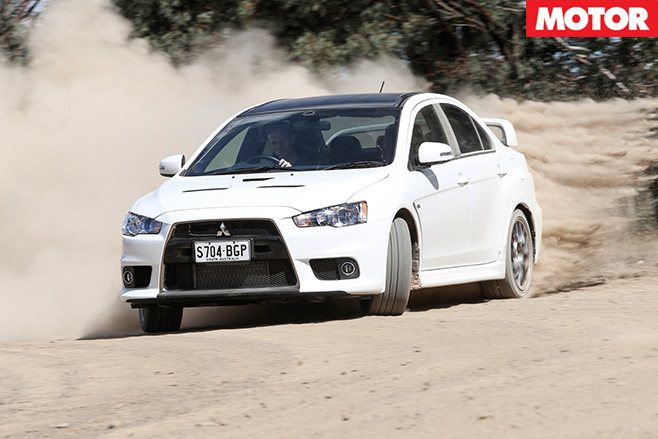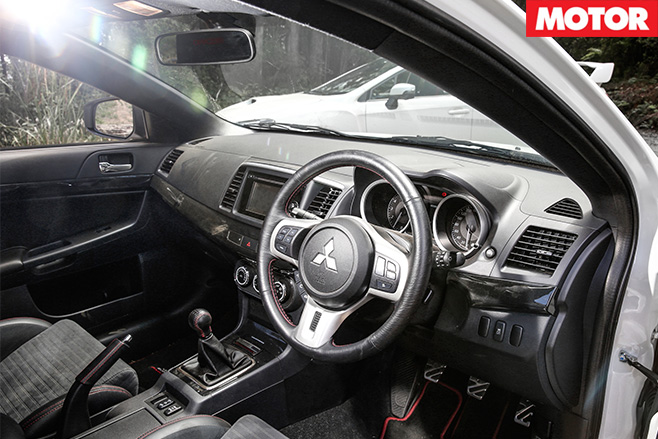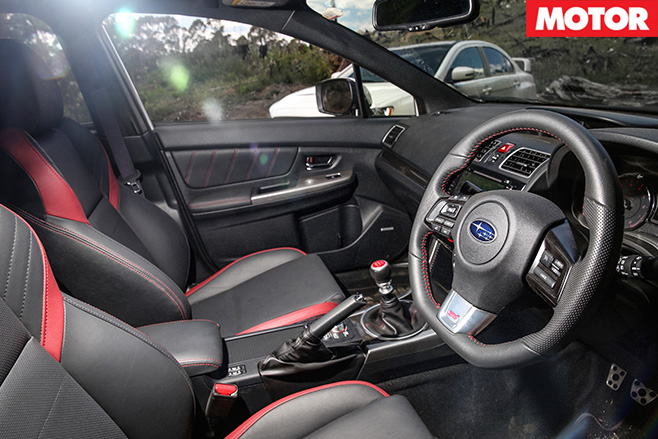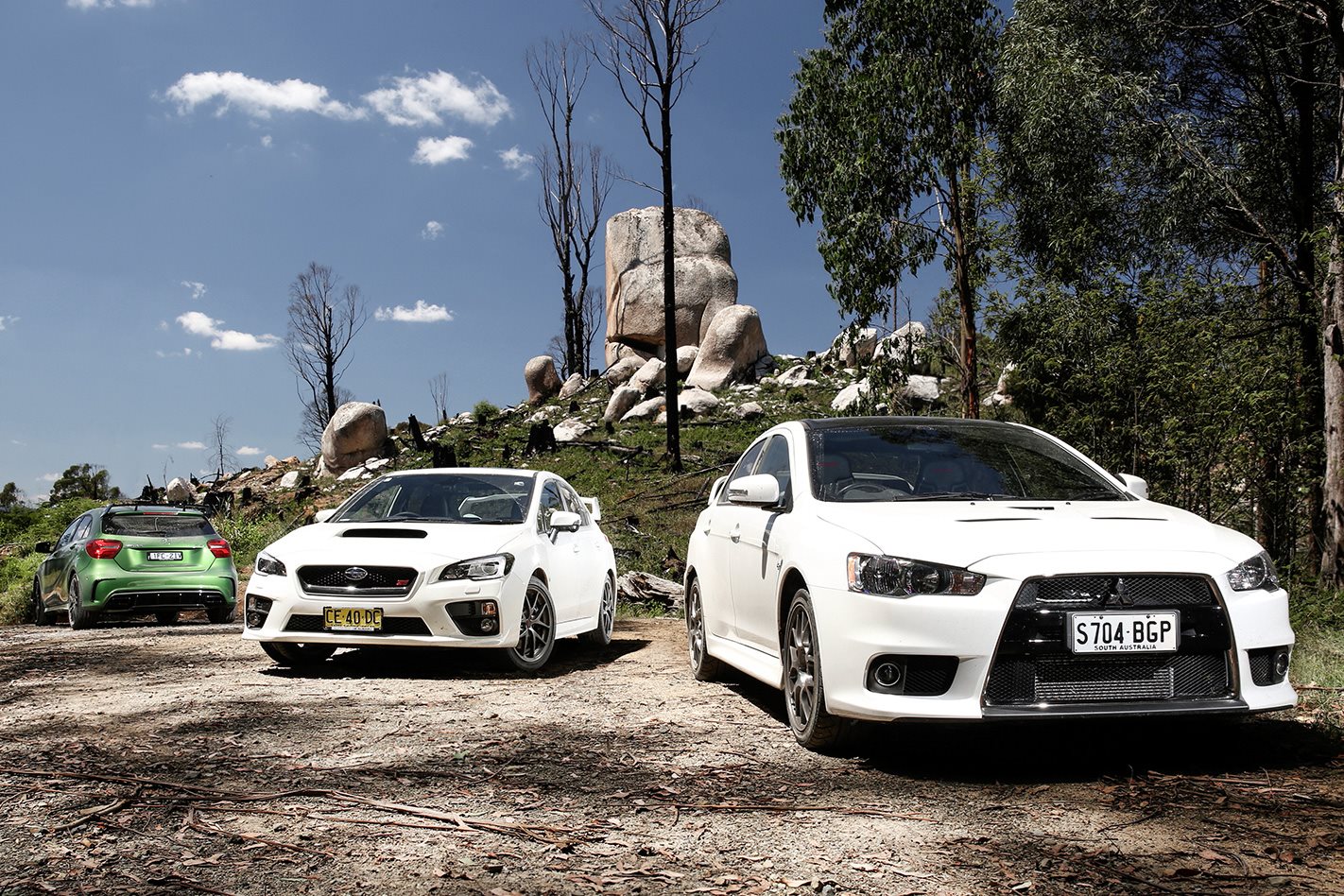Aussies are well familiar with the concept having to choose between red and blue.
Whether it’s cars (Ford vs Holden), football (Queensland vs NSW), beer (Tooheys/Cascade) or, back in the day, smokes (Winfields), most folks tend to naturally form a preference for one side or the other.
But Australia doesn’t have a monopoly on this match-up. The fight between Subaru’s WRX STI and Mitsubishi’s Lancer Evolution might not have the history of our local dust-ups, but the battle lines are equally clear: fast Lancer fans aren’t likely to join the boxer brigade, and vice versa.
With the arrival of the Lancer Evolution Final Edition, however, the contest is nearly at an end. Given that makes the WRX STI the last man standing, you could argue the Subaru is the winner by default, but is the Mitsubishi able to land one last knockout punch, in the manner of Mickey Rourke in The Wrestler?

The latter is here as a representative rather than a competitor, to test, do our Oriental protagonists still bring anything to the table in the wake of this Euro onslaught? Or have they been overwhelmed by the technological superiority of the Germans?
After 24 years and 10 generations, the Final Edition is the swansong for the Lancer Evolution. Sadly, the mouth-watering 353kW Final Concept has been significantly watered down for production, however this is not just a badge-and-stickers job either. ECU fiddles and sodium-filled valves for improved cooling liberate an extra nine kilowatts at the top end and add 48Nm of mid-range punch, bringing totals from the 2.0-litre turbo four to 226kW/414Nm.

Subaru also recently updated the WRX STI for MY16, however the changes are limited to increased safety and convenience features on Premium models. The venerable EJ25 2.5-litre turbo flat-four continues with 221kW/407Nm, sent through a six-speed manual gearbox. Subaru claims an impressive 4.9sec for the 0-100km/h sprint, however extracting numbers continues to be as cruel and brutal as the opening scenes of Saving Private Ryan.
The only way to get the STI off the line is to use as many revs as possible, dump the clutch and hope the drivetrain doesn’t blow itself to smithereens. Wetting the tyres helps slightly, reducing the shock load and allowing a little wheelspin to keep the car on boost. It jumps off the line like it’s been stabbed and then it’s a matter of changing gears as quickly as possible, something the synchros aren’t too fond of. Crunch.

Anyhow, the Evo requires a similar technique, but an artificial 5500rpm rev limiter when stationary limits the violence with which it can launch. That’s not enough, and the Mitsubishi bogs down slightly, losing three-tenths to the Subaru by the time the pair hit 40km/h. Interestingly, trying the same wet-tyre trick as the STI sends the Evo’s active all-wheel drive system into conniptions, spinning either the front or rear wheels like mad and crabbing down the strip like a wonky dog.
It still trails slightly at 100km/h (5.61sec) but from there the two are virtually neck and neck, the Lancer crossing the 400m mark in 13.67sec at 164.78km/h, a mere 0.05sec and 0.20km/h behind the STI. Of course, the best European hot hatches are more than a second up the road these days, and even price rivals like the VW Golf R are at least half-a-second clear, but we’ll continue.

While effective, the 4B11 is laggy by today’s standards; we’ve become spoiled by new-gen turbo engines that pull from idle. It also sounds strained at higher rpm – chasing the 7000rpm redline sounds like you’re hurting it – and devours 98RON at a tremendous rate. Combined with a tiny 55-litre fuel tank, the Evo’s thirst results in a pathetic touring range; fill-ups in 350km or less are commonplace.
It’s not helped by ill-conceived gearing. With Mitsubishi’s SST dual-clutch ’box having ended production a while ago, the Final Edition is only offered with a five-speed manual, and in an effort to force buyers into the then-new whizz-bang self-shifter, the manual Evo X was seemingly saddled with whatever cogs were left on the shelf.

Unfortunately, the Subaru is a very difficult car to drive smoothly; it’s all too easy to get out of ‘sync’ with the car and end up looking like you’re on your third driving lesson. Without fail, everybody who drives it stalls it, too. Thankfully, it’s at its best when you’re driving it like it was designed to be driven.

Any under or oversteer at road speeds is usually the result of driver error; the latest STI is massively stiffer both in terms of bodyshell and suspension set-up than its predecessor, and while this does bugger-all for the ride quality, it has made it a much sharper cornering tool.
So far, so good, however the fly in the Subaru’s ointment is its steering. The weighting is about right and there’s enough feedback, but it’s very sharp just off centre and feels strangely ‘springy’ with lock applied. Far worse, though, is its behaviour over mid-corner bumps; the rack rattle sounds like the bolts haven’t been done up properly and the kickback has the wheel bucking and writhing in your hands. It’s a major dynamic flaw and costs the STI dearly on the very roads it should shine brightest.

The steering is quick and accurate and the Mitsubishi peels into turns like a rear-driver; you can also trail the brakes to move the rear slightly but on exit the result is the same – total traction bar a hint of oversteer. Thrown around on the dirt for Brunelli’s camera, the STI is great fun, but feels edgy and unpredictable compared to the smooth fluidity of the Evo. No matter how ambitious the entry or aggressive the oversteer angle, you always feel like the situation can be recovered.

The Subaru sets no benchmarks, however the MY16 update brings welcome improvements. The new 7.0-inch touchscreen is fast-acting and looks slick, miles better than the clunky old unit shared with myriad Toyotas.

Of our two winged warriors, the Mitsubishi is clearly the less competitive 2016 package. Ironically for a model called Evolution, the Mitsubishi has suffered from a lack of investment and would need a serious overhaul of its interior, transmission and engine efficiency to battle today’s best.
Its dynamics are still right up there, and act as a reminder that these cars were once as much designed to fly through the forest as they were to do the weekly shop, which only makes it more upsetting that it will not get that chance. Mitsubishi says the market doesn’t want high-powered all-wheel-drive turbo cars, which must be why Ford just spent a bomb developing the Focus RS and the Mercedes-AMG A45 continues to be a sell-out success.

Subaru has expended a lot of effort in trying to make the STI more liveable day-to-day and has succeeded to a point, but it’s barely any faster than it was 15 years ago while everything else has made huge strides forward. It retains a pass mark by offering the raw involvement of a Renault Megane RS with the all-weather ability of the VW Golf R, but it could face a tough test with the mid-year arrival of the Ford Focus RS.
| u00a0 | LANCER EVO FINAL EDITION | SUBARU WRX STI |
| Body | 4-door, 5-seat sedanu00a0 | 4-door, 5-seat sedan |
| Drive | all-wheel | all-wheel |
| Engine | 1998cc inline-4, DOHC, 24v, turbo | 2457cc flat-4, DOHC, 16v, turbo |
| Power | 226kW @ 6500rpm | 221kW @ 6000rpm |
| Torque | 414Nm @ 3500rpm | 407Nm @ 4000rpm |
| Transmission | 5-speed manual | 6-speed manual |
| Weight | 1565kgu00a0 | 1537kg |
| L/W/H | 4510/1810/1480mmu00a0 | 4595/1795/1475mm |
| Steering | hydraulically-assisted rack-and-pinion | hydraulically-assisted rack-and-pinion |
| Price as tested | $53,700 | $55,390 |
| Pros | Awesome all-wheel drive system | Sharp handling; improved interior |
| Cons | Dated interior; poor transmission | Flawed steering; should be faster |
| Star Rating | 3/5 | 3.5/5 |






